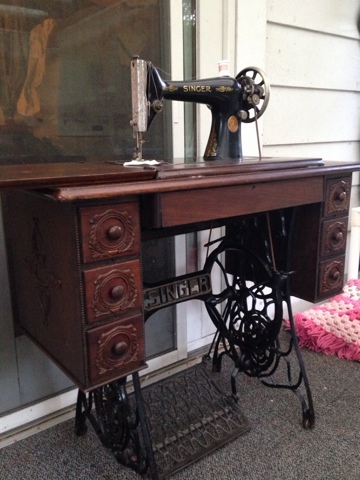 It's almost hard to believe that people used to sew exclusively by hand and by sunlight or candlelight.
It's almost hard to believe that people used to sew exclusively by hand and by sunlight or candlelight.
Can you imagine doing all your sewing without power? Let's imagine a walk through time.
I went to the articifer's day at the historical Saratoga Battlefield where re-enactors demonstrated the work of tailors and seamstresses of the late 1700s.
These people were hard at work making corsets and skirt aprons and men's uniforms. Their hand work was impressive! They said a shirt could take up to 30 hours to make where a shoemaker could cobble a pair of shoes in half that time. Clothing was precious. Tailors were an important part of society.
These people were hard at work making corsets and skirt aprons and men's uniforms. Their hand work was impressive! They said a shirt could take up to 30 hours to make where a shoemaker could cobble a pair of shoes in half that time. Clothing was precious. Tailors were an important part of society.
The small blue wallet in the first picture housed their tools of the trade, mostly needles and pins. I wish I took a picture of their version of a pair of scissors! It was very interesting to see how far we've come in the craft.
Decades later, inventors began making foot treadle sewing machines. I spotted a Wilcox & Gibbs head at an antique fair. This must have been an incredible invention back in its infancy!
I adore the round, organic look of this chain stitcher. I passed it by since I felt it was too far gone for me to restore. Parts for this are not bountiful, but what a beautiful design!
This had to be one of the more interesting treadle machines I saw at the fair.
All housed up in a beautiful sewing desk. I can't help but wonder the story behind this machine and who may have owned it! You can see the rest of the antique machines I saw at the fair at this post.
Here is is an 1884 Wheeler and Wilson New Family treadle machine. The card says it would have cost $55 to buy it new back in the day. What a treasure for the affluent Victorian Era home!
I saw this one at a special quilt display in 2013 at the Adirondack Museum in Blue Mountain Lake, NY.
Singer jumped in the treadle machine world in 1851. Their style didn't change very much over the first decade. They were solid and heavy and industrial. They had an ever increasing catalog of accessories. They saved time. Women wanted them in their homes.
My great aunt owned this show-stopping 1923 treadle set up, which came to my home in 2014.
My mother learned to sew on it. By the time I received it, it was full of lint and dust, to the point of not working. The wheel turned about one inch. You can read more about the restoration I did on it at this post.
With homes becoming electrified, power could start running these machines! Factories reengineered their designs and changed with the times.
When Singer unveiled their portable sewing machine, women wanted these light, sleek beauties. You can sew up a storm all day and easily pack it up in a carrying case and put it away before preparing dinner. It was a marvel!
How can you look at this and not want one? Right?!
This pedal came with my 1935 Featherweight. All metal construction.
You don't see many of these around!
It works but I found the button bar would not pop up every time after depressing it. I had to pull it up with my toe to get it to stop. I cleaned and lubed it inside and out but it continued to occasionally stick. Since it was so old, and I had another pedal that worked properly, I decided to retire it.
This pedal came with my 1950 Featherweight. I love the shine they have and how they match the look of the machine.
The button on the right is a place to rest your foot. You roll the ball of your foot onto the button to engage it and roll off of the button to stop it. It feels funny at first but when you get used to this technique, you will find your speed control becomes quite accurate. You won't go from 0 - 60 in less than a second! I like sewing without shoes. Socks or thin slippers are great for a better feel of the buttons. How do you work the pedal?
When I wanted to know more about the pedal wiring, I found these helpful diagrams. Remember that wiring can be quite fragile or dangerous to work on. Please be careful or get assistance from an expert.











No comments:
Post a Comment